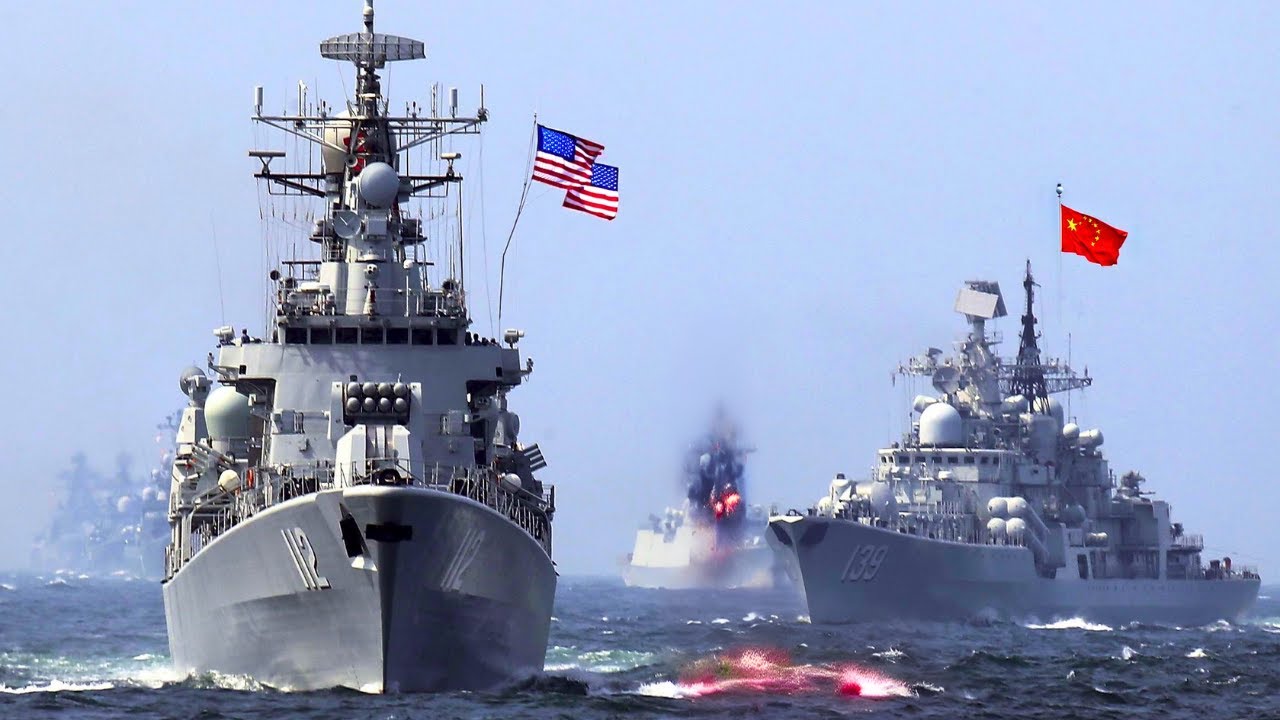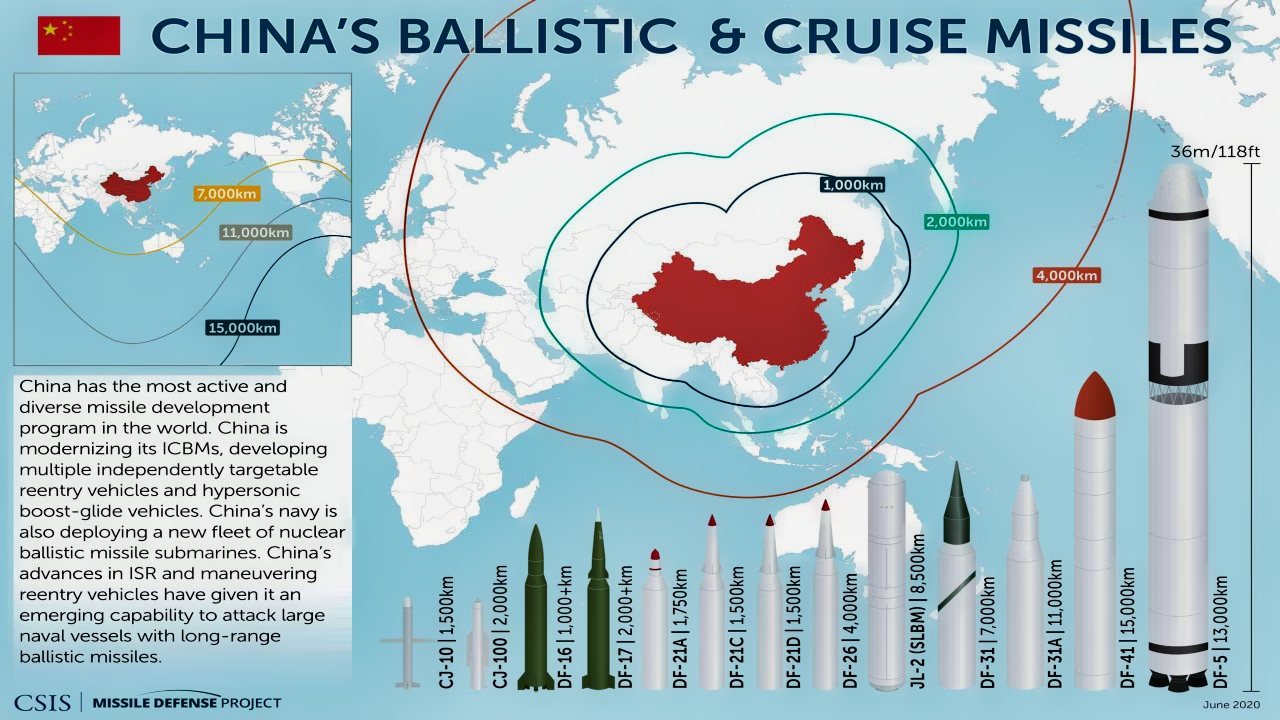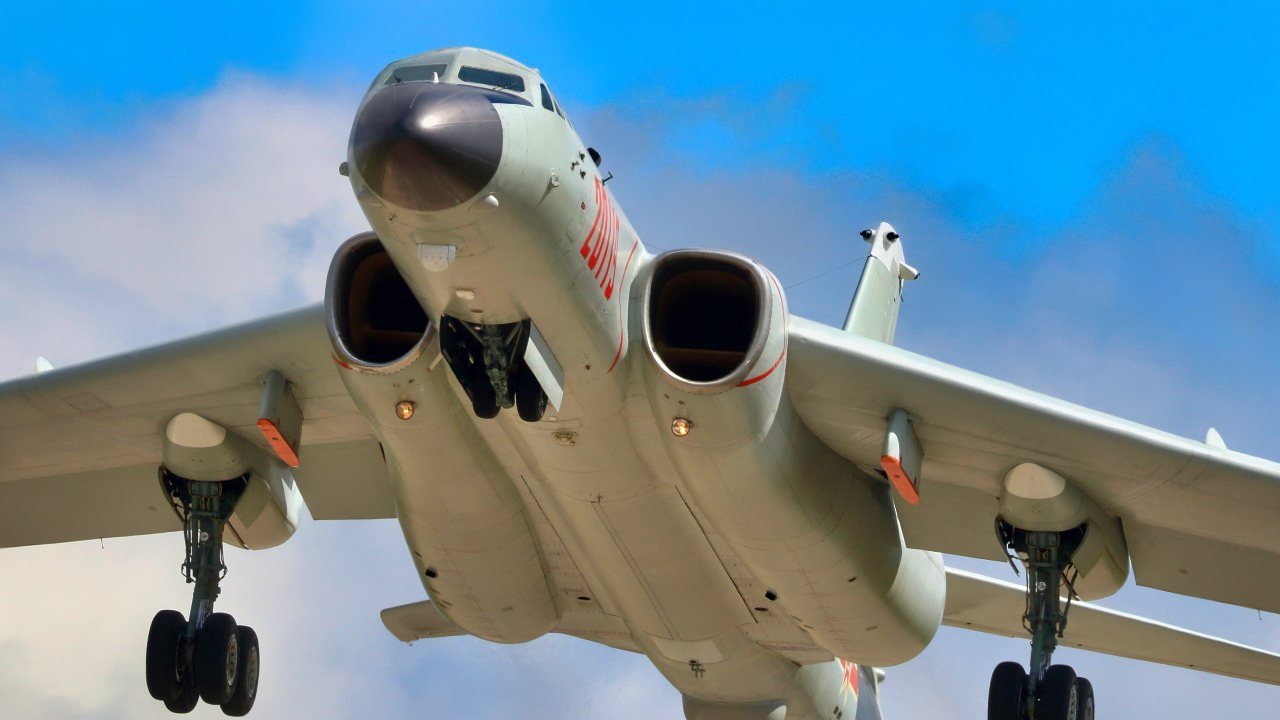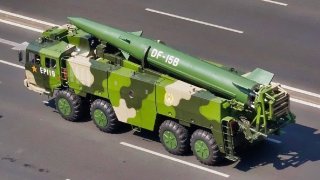China's Missiles Could Annihilate America's Bases in Asia in a War
The U.S. military's bases in the Indo-Pacific are increasingly vulnerable to China's advanced missile capabilities.
Summary and Key Points: The U.S. military's bases in the Indo-Pacific are increasingly vulnerable to China's advanced missile capabilities.

-China's A2/AD strategy aims to deter and destroy American military assets, and its arsenal includes sophisticated missiles and hypersonic weapons.
-Despite efforts to enhance base defenses and distribute forces, U.S. installations remain inadequately protected. Congressional criticism highlights the need for better infrastructure, such as aircraft shelters.
-Without significant improvements, U.S. bases could be compromised early in a conflict, jeopardizing America's ability to maintain a strategic presence in the region.
U.S. Bases in Indo-Pacific at Risk from China's Missile Arsenal
The United States maintains a nexus of military bases throughout the Indo-Pacific. These bases have formed the backbone of America’s strategic presence in the region, which has been a dominant factor in the geopolitics of Asia since at least the end of the Second World War.

Today, that dominance is being called into question by a rising People’s Republic of China (PRC).
As part of Beijing’s quest to control the Indo-Pacific, what they view as their strategic backyard, China’s military has developed a coterie of capabilities meant to both deter and destroy America’s military in the region.
One such capability is China’s anti-access/area-denial (A2/AD) strategy. Armed with one of the largest arsenals of missiles, rockets, and even hypersonic weapons, China has integrated these systems with sophisticated air defense systems as well as sensor nodes to enhance the lethality of these systems. The A2/AD mission of the Chinese military is simple: hold the American military back while China’s Armed Forces march all over their neighbors.
I’ve repeatedly written about the A2/AD threat to America’s surface warship fleet—notably its vaunted aircraft carriers.
China's Threat to US Bases
But there is a significant threat to America’s permanent bases in the region as well.
In places like Guam, where the United States has moved much of its military assets in the region that will be essential for deterring China from attacking Taiwan or any of its other neighbors, there is nowhere really to hide from China’s massive missile fusillade that will be launched at the American territory if war between Beijing and Washington erupts.

Every US base in the Indo-Pacific can now be targeted by China’s missiles. It’s so bad that even the United States Congress is chastising US military leaders for not adapting to the contested environment fast enough.
For example, Representative John Moolenaar and Senator Marco Rubio sent a letter in May of this year to the Biden Administration’s Secretary of the Air Force Frank Kendall and Secretary of the Navy Carlos Del Toro, criticizing them for not making enhancements to US bases throughout the Indo-Pacific to make them more survivable against China’s massive missile threat.
One big defensive measure that has not been undertaken by US military leaders in the Biden Administration has been the refusal to install aircraft shelters at US military bases throughout the region.
America's Inability to Prepare for China Missile Threat
It’s extraordinary since so many of the bases targeted by China’s missiles are basically forward-positioned airbases. Should either the aircraft be targeted while parked on the tarmac or the runways themselves be destroyed by Chinese missile attacks, then those bases become wasting assets in a conflict with China.
The United States has built a paltry 22 aircraft shelters (begrudgingly) while China has hardened their bases with 400 aircraft shelters (anticipating an American retaliation with long-range missiles of their own).
The letter in question further remonstrated the military for adhering to what it derisively described as “cumbersome” World War II-era protocols that do little more than delay construction and inflate costs. This is a pattern repeated throughout the force, as I have demonstrated with the Navy’s cost overruns with the Constellation-class guided-missile frigate program. It’s systemic and it’s going to make us lose a major war that is coming far sooner than most realize.
To be fair to the Biden Administration, they have striven to transform the infrastructure of America’s bases throughout the region.
Protecting the US Presence in Asia
For starters, as my colleague, Gabriel Honrada of the Asia Times assessed recently, the Biden Administration “has expanded military access to bases in allied nations across the Indo-Pacific and deployed advanced weapon systems, including Tomahawk missiles in Japan and mobile missile launchers in the Philippines.” Honrada further observed, “This strategic shift aims to distribute US forces in smaller, more mobile units across the region rather than concentrating them at large bases, thereby making them less vulnerable to Chinese missile strikes.”
Alas, these efforts are both coming in very late in the great game with China and they are insufficient for maintaining America’s combat presence in a contested Indo-Pacific. Of the 66 major facilities that the United States maintains, all are under threat and all are insufficiently protected.

What’s needed is layered, comprehensive, and distributed defenses for US bases as the Center for Strategic and Budgetary Assessments (CSBA) concluded in January of this year.
Such changes are being made too slowly and are unlikely to help defend those bases if China decides to initiate conflict with the US in the near-term (as in, this year). Indeed, recent war game simulations show that the US military is going to lose significant numbers of aircraft on the ground to Chinese missiles when Beijing starts its war for dominance over the Indo-Pacific.

Those bases are part of America’s strategy for waging a winning war against China. Should they be destroyed of disabled for large portions of such a war at the outset of a conflict, then the US will lose to China as its ability to fight China will have been degraded.
About the Author:
Brandon J. Weichert, a National Interest national security analyst, is a former Congressional staffer and geopolitical analyst who is a contributor at The Washington Times, the Asia Times, and The-Pipeline.
All images are Creative Commons.


